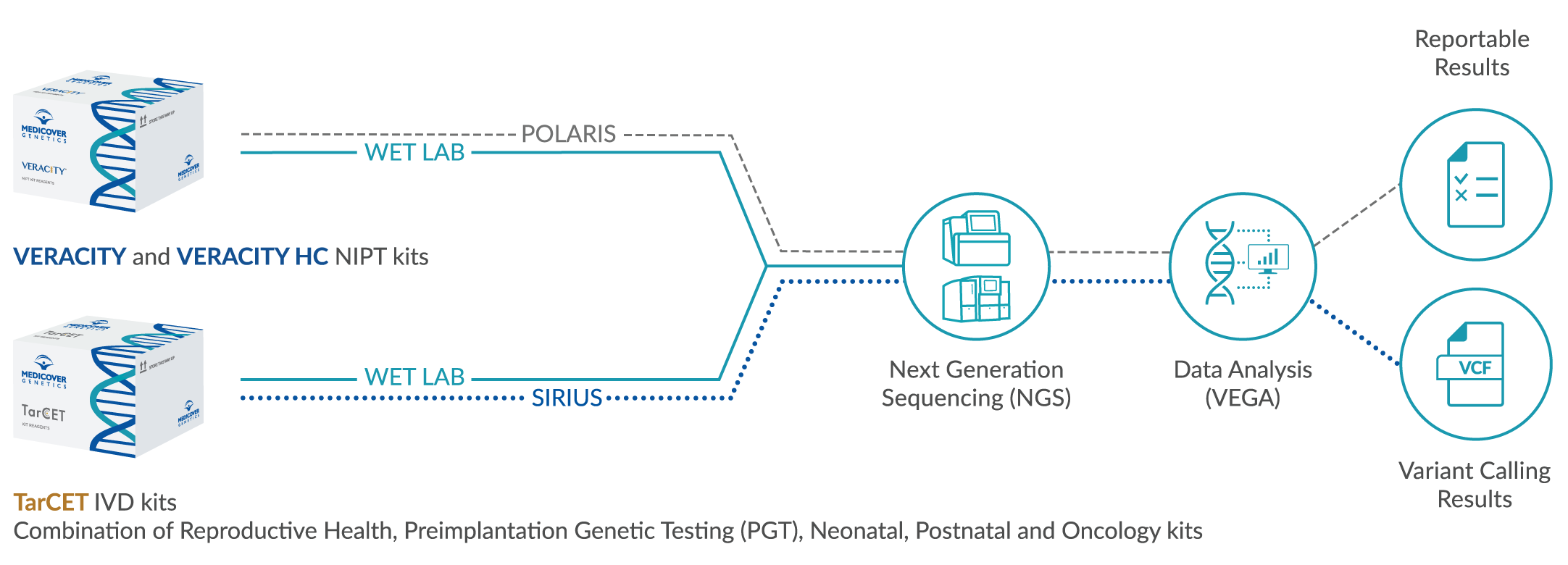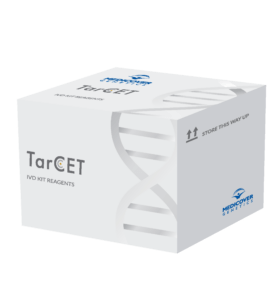SCIENTIFIC BACKGROUND
Beta thalassemia is an autosomal recessive inherited hematological disorder caused by a quantitative synthesis disorder of the β-globin chains of hemoglobin. It is estimated that approximately 3% of the world's population are carriers of beta thalassemia, but the prevalence varies widely among ethnic groups. A particularly high prevalence is found in Mediterranean countries, parts of Asia, the Middle East, and West Africa.
Human hemoglobin consists of different types of hemoglobin, each composed of 4 globin chains (two identical chains form a tetramer). Hemoglobin A (HbA), which is the predominant form in adults (approximately 97%), is composed of 2 α- and 2 β-globin chains. In beta thalassemia, synthesis of the β-chains is reduced or completely absent, resulting in an excess of free α-chains that exhibit high instability. Their precipitation leads to premature hemolysis of erythrocytes or their precursors in the bone marrow.
The homozygous form of beta thalassemia is also called thalassemia major, the heterozygous form is called thalassemia minor. The minor form usually shows only mild, hypochromic microcytic anemia, and significant clinical symptoms are not usually observed. In the intermediate form of beta thalassemia (thalassemia intermedia), the severity ranges between thalassemia minor and major.
Symptoms of thalassemia major, also known as Cooley anemia, usually appear in the first months of life, as soon as fetal hemoglobin (HbF) is replaced by adult hemoglobin (HbA). Clinically, infants are characterized by failure to thrive, hepatosplenomegaly and jaundice, with severe microcytic hypochromic anemia and abnormal erythrocyte morphology. In untreated patients, the increased but ineffective erythropoiesis leads to characteristic skeletal changes, especially in the cranial bones, due to widening of the medullary canals. Regular blood transfusion treats the symptoms of the major form. To avoid iron overload with the risk of hemosiderosis, additional therapy with iron resorption inhibitors is indicated. Since August 2020, it has been possible to treat adults who require transfusion with the active ingredient luspatercept. The only curative treatment option remains bone marrow transplantation.
Variant forms occur in association with combined heterozygosity with abnormal hemoglobins such as sickle cell hemoglobin (HbS) or Hb Lepore.
Most heterozygous carriers of beta thalassemia are detected by chance during routine screening. In the blood analysis, a microcytosis and/or a hypochromia, or sometimes a lowered Hb value, is observed. In the course of diagnosis, an iron deficiency should first be excluded by determining serum ferritin, which is the most frequent cause of hypochromic microcytic anemia. The Mentzer index can be used to estimate whether iron deficiency anemia or a beta thalassemia is more likely.
Mentzer index (MI) = (MCV [fl] / erythrocyte count [millions per microliter])
MI >13 suggests iron deficiency anemia, MI <13 suggest of beta thalassemia
If iron deficiency is excluded, the presence of hemoglobinopathy can be investigated by Hb differentiation. In many cases, the question of a carrier status for a hemoglobinopathy arises only with the desire to conceive a child, either because of a positive family history or because of ethnic origin. In an existing pregnancy, a rapid diagnosis is important in order to be able to assess the risk of a severe form of hemoglobinopathy in offspring as early as possible.
As hemoglobinopathies can occur in a wide variety of combinations, hematologic findings should always be compared with molecular genetics results and checked for validity.
References
Origa R. Beta Thalassemia. 2000 Sep 28 [Updated 2018 Jan 25]. In: Adam MP, Ardinger HH, Pagon RA, et al., editors. GeneReviews® [Internet]. Seattle (WA): University of Washington, Seattle; 1993-2019 / Arbeitsgemeinschaft der Wissenschaftlichen Medizinischen Fachgesellschaften. S1-Leitlinie: Thalassämie. 30.06.2016 / Kohne et Kleihauer 2010, Dtsch Arztebl Int 107:65 / Weatherall et Clegg 2001, The Thalassaemia Syndromes, 4th ed. Oxford: Blackwell Science / Kleihauer et al. 1996, Anomale Hämoglobine und Thalassämiesyndrome, ecomed Verlag / Fachinformation Rebozyl®





















